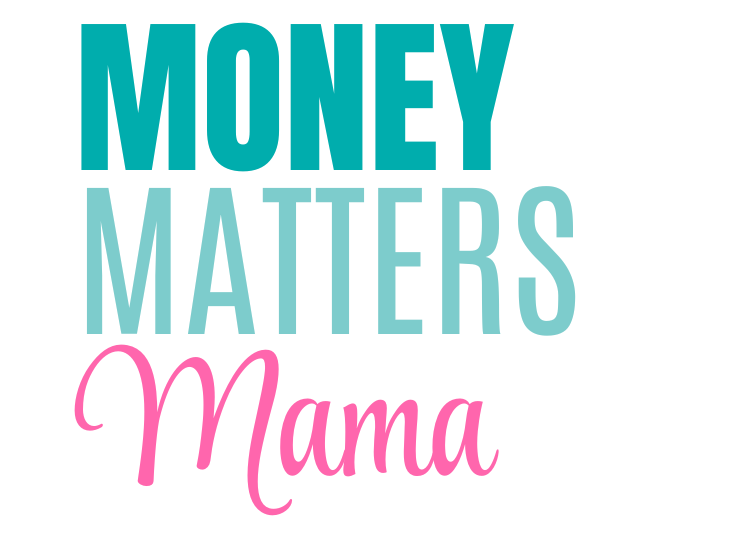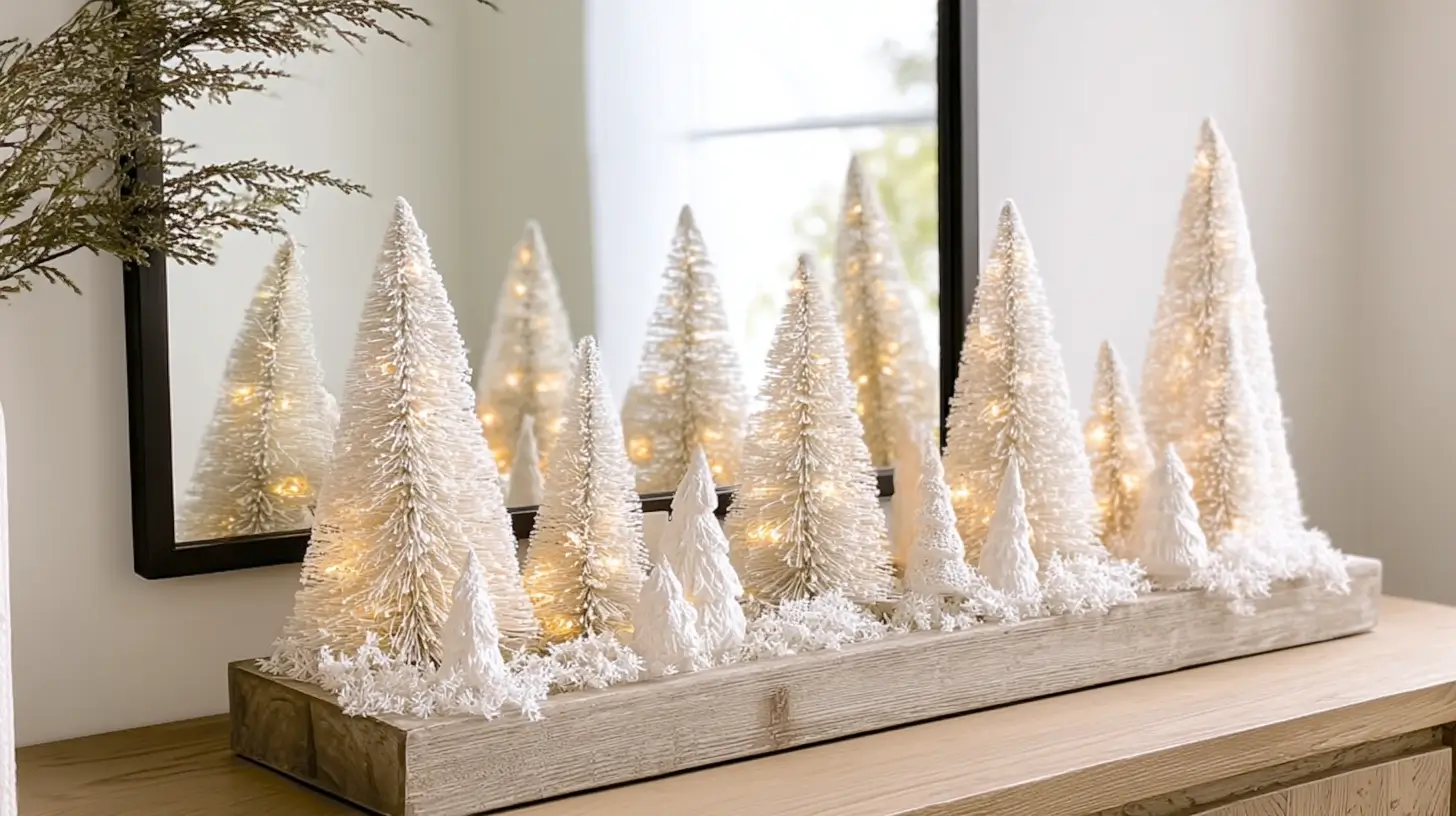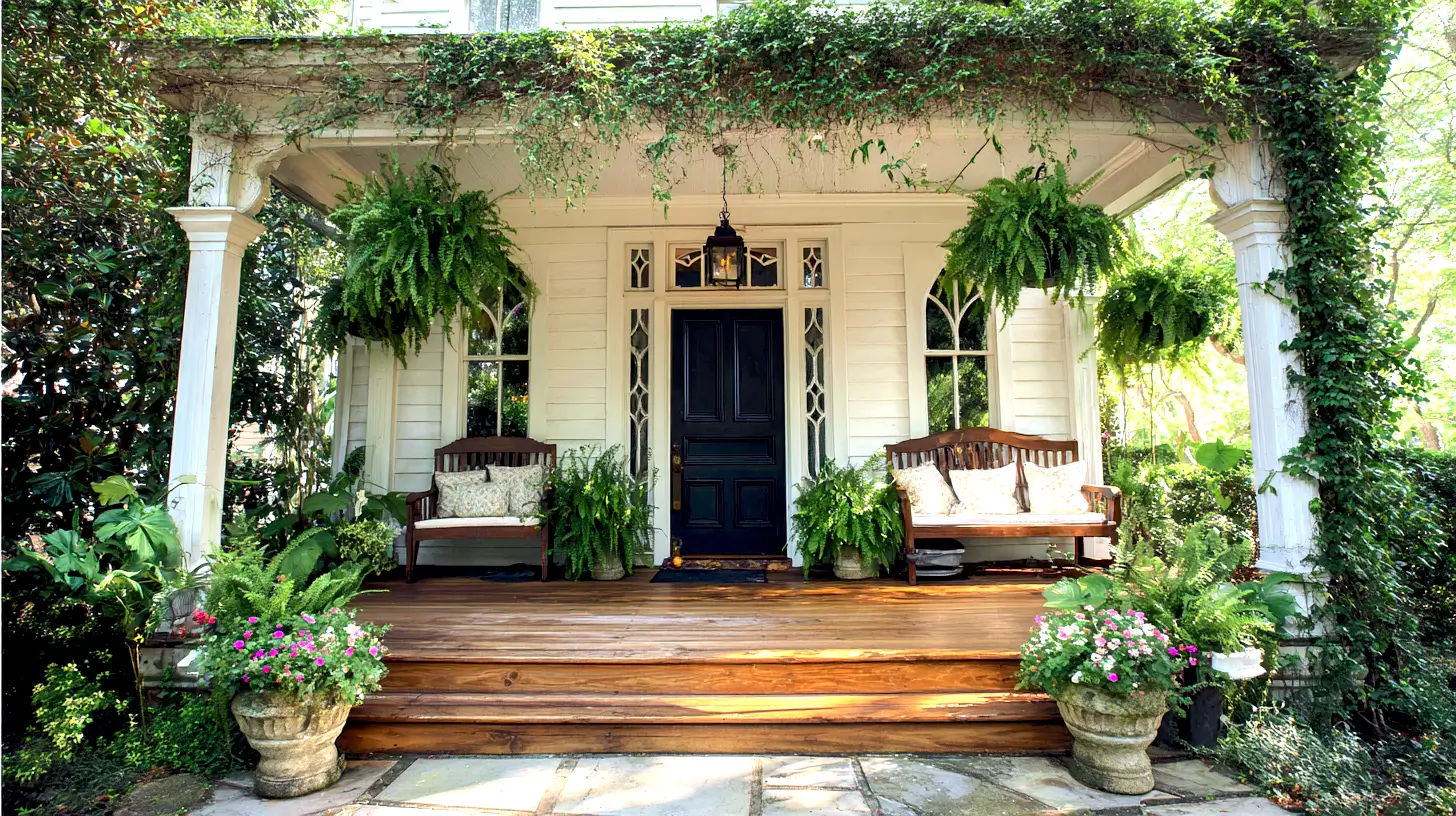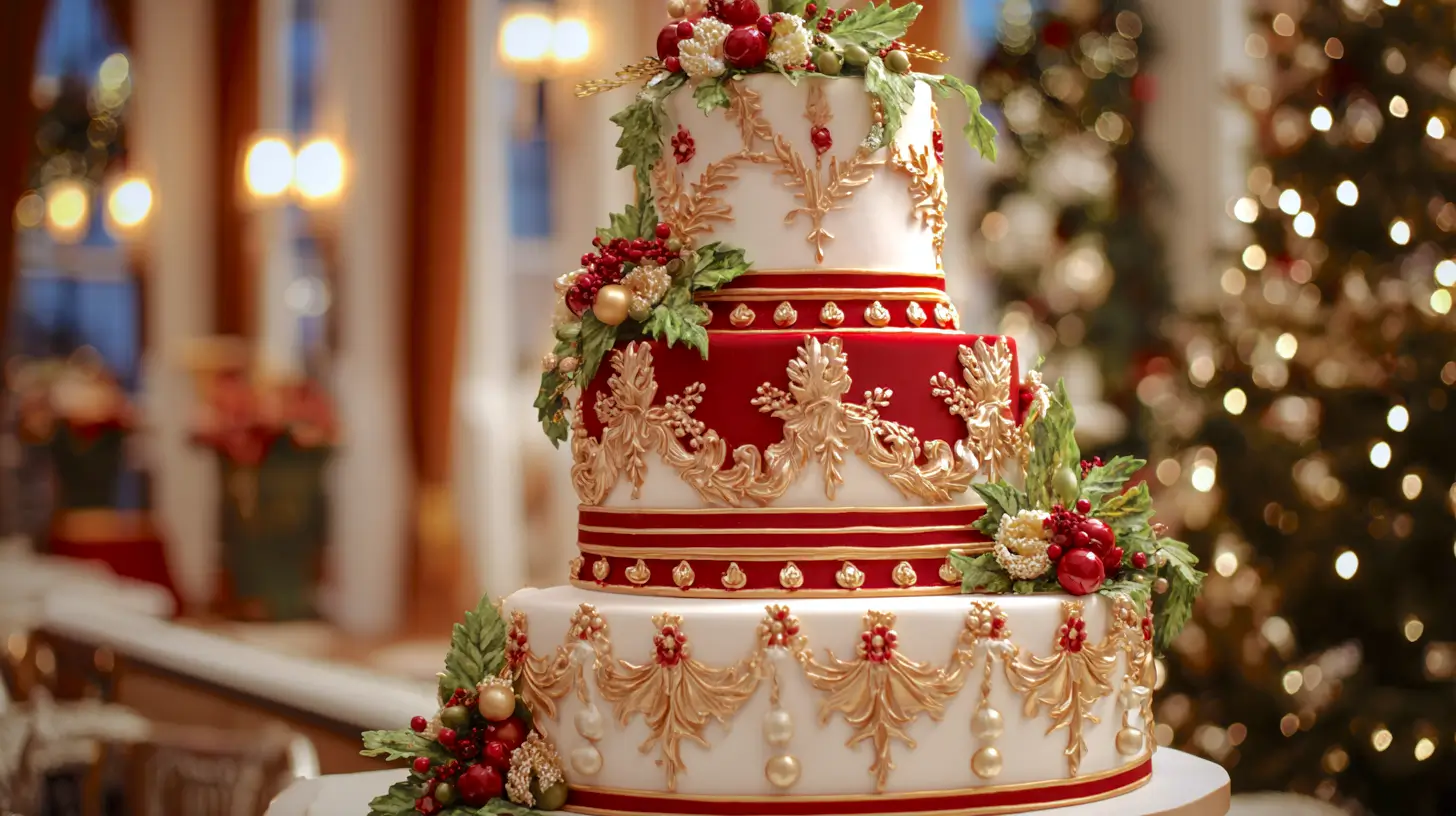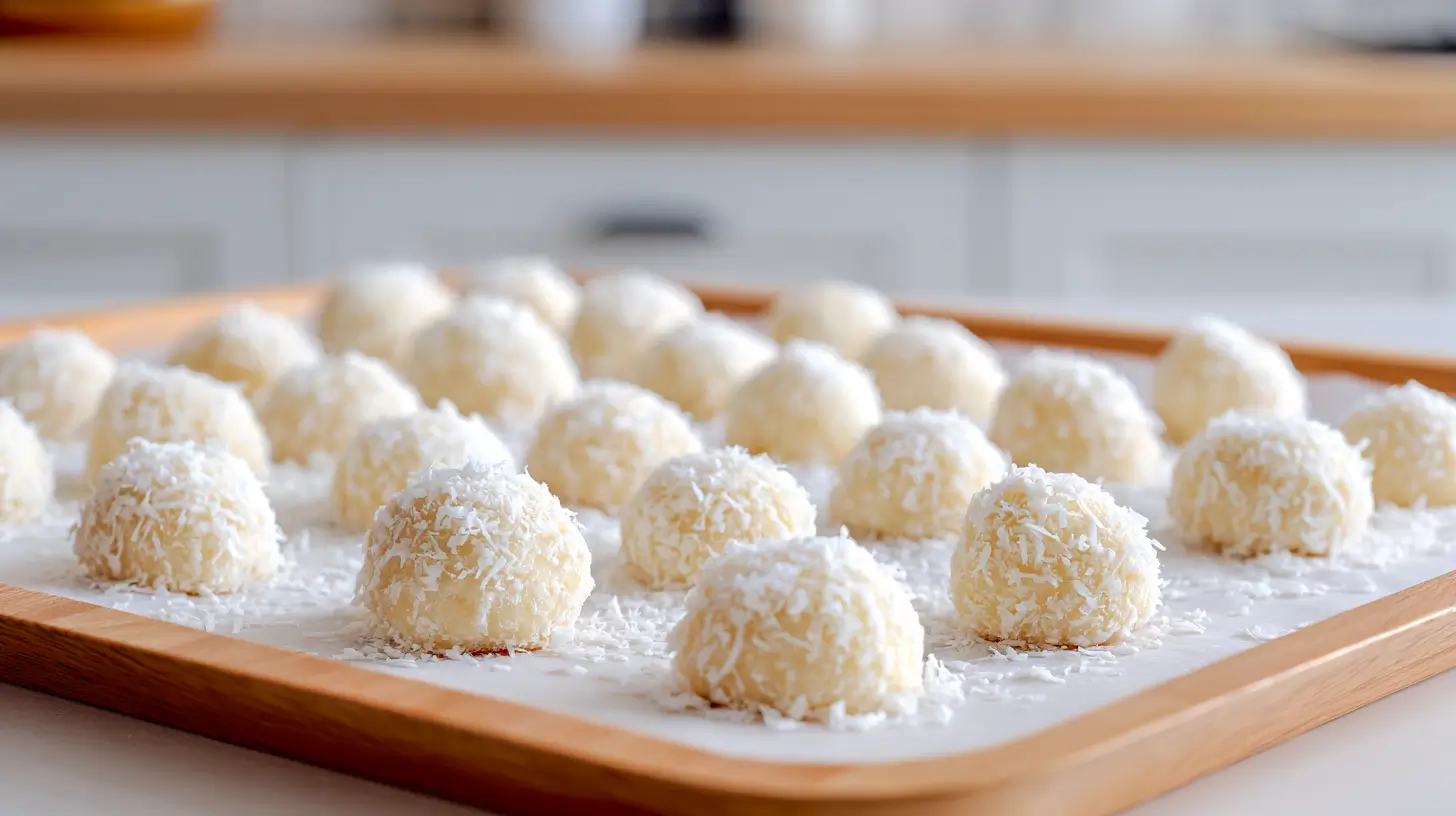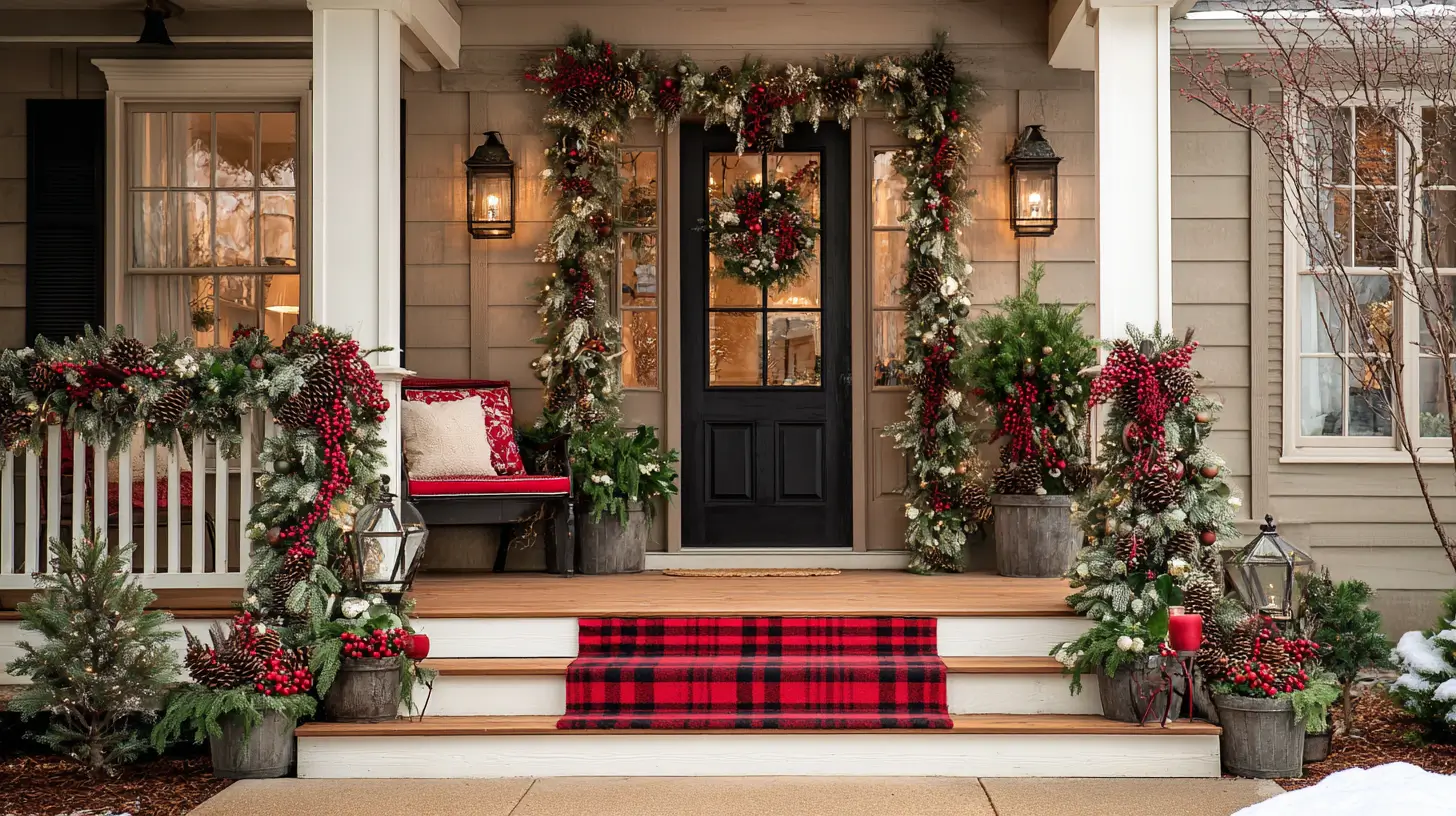Container gardening is one of those things that just makes sense when you’re trying to save money. If you’re living on a budget or looking for frugal ways to feed your family, you don’t need a big backyard or a fancy greenhouse. You just need a few pots and a sunny spot. That’s what I love about it. It’s simple. It’s low-cost. And it gives back every single day.
In this post, I’m going to walk you through all the basics. I’ll cover the best plants to grow, cheap container ideas, and how to keep your plants alive without spending much. You’ll also find tips for growing food indoors and ways to reuse things you already have at home. I’ll share some smart watering tricks, how to make your own compost, and how container gardening can actually help stretch your grocery budget.
Even if you’ve never grown a plant before, you’ll find this super doable. And if you’ve tried before but didn’t have much luck, don’t worry—I’ll make it easy to start fresh. This post is all about giving you clear, practical steps so you can grow your own food without wasting money.
I’ll even show you how to turn trash into planters. I’ll talk about cheap soil options, plant food swaps, and how to garden in small spaces like porches, patios, and windowsills.
Container gardening is a budget-friendly hobby that can turn into a way to feed your family healthier food. It’s something you can start today, without a trip to the store. Ready to see how much you can grow on a dime? Let’s get into it.
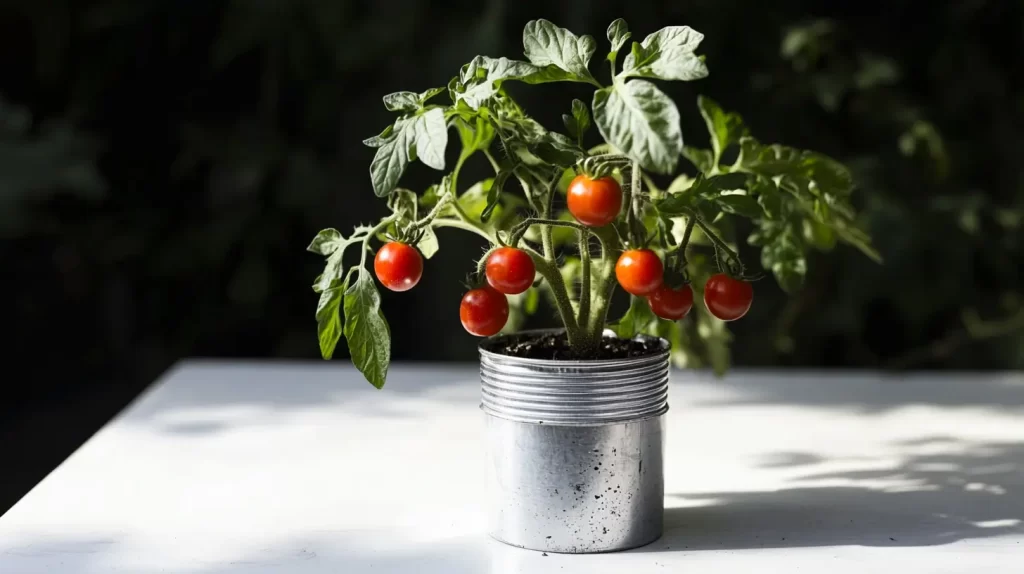
This site includes affiliate links; you can check the disclosure for more details.
What You Need to Start a Container Garden on a Budget
Starting a container garden doesn’t have to mean spending a lot. You can start small, using things you already have at home. The goal here is to grow fresh food without spending much, or anything at all.
Here’s what you’ll need:
- Something to plant in (old buckets, storage bins, bowls, or even large cans)
- Dirt (don’t overthink this—we’ll talk soil tips in a bit)
- Seeds or starter plants
- Water (just from the sink or rain if you collect it)
- A sunny spot
If you’re not sure what works as a container, look around your kitchen and garage. I’ve used everything from cracked mixing bowls to broken laundry baskets. Just make sure your container has drainage holes or add a few with a screwdriver.
Here are a few frugal container ideas:
- Coffee cans
- Ice cream tubs
- Milk jugs cut in half
- Takeout soup containers
- Dollar store bins
For seeds, try swapping with a friend or join a local plant group online. Libraries and community centers sometimes give away free seeds in the spring. And if you buy produce like bell peppers or tomatoes, you can try planting the seeds right from those.
A good spot for your containers is one that gets 6+ hours of sun. A front porch, balcony, or windowsill will do the trick. You don’t need a yard.
When you’re starting out, don’t try to grow everything at once. Pick one or two easy things. Container gardening works best when you keep it simple.
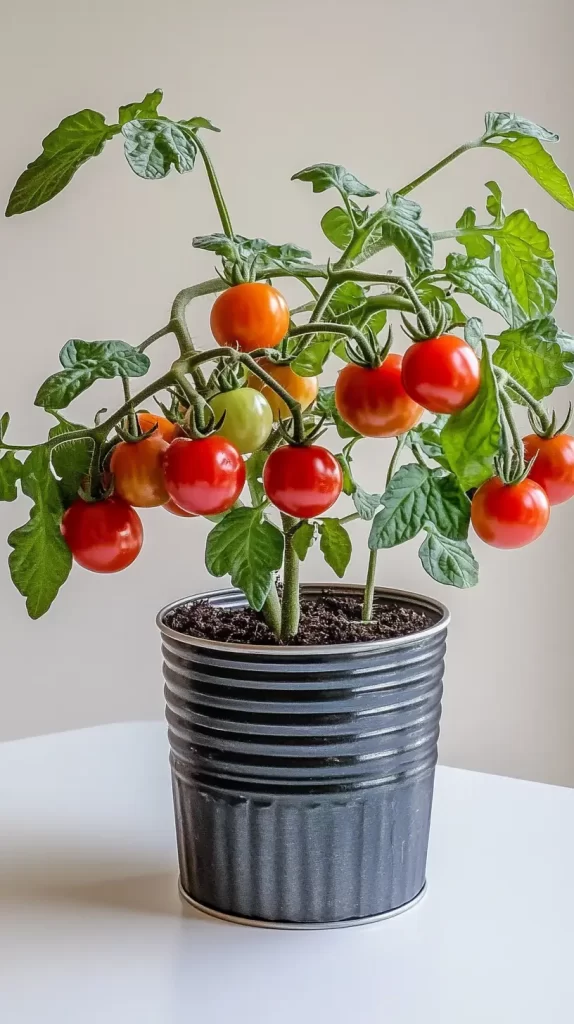
Best Plants for Container Gardening That Save You the Most
If saving money is the goal, you want plants that give you more than you put in. Some plants are just easier and cheaper to grow than others. Let’s start there.
These are some of the best plants to grow in containers when you’re watching your budget:
- Cherry tomatoes: One plant gives you a steady stream of fruit.
- Lettuce and spinach: Grows fast, and you can cut and regrow.
- Herbs like basil, parsley, mint, and chives: Fresh flavor, no store trips.
- Green onions: Regrow from grocery store leftovers.
- Peppers: Hot or sweet, both do well in pots.
- Strawberries: Perfect in hanging containers or small tubs.
- Radishes: Super fast growers and easy to care for.
Plants that keep producing after harvest give you the most bang for your buck. Lettuce is great for this. Just snip the outer leaves and let the rest keep growing. The same goes for herbs.
Stick with compact or dwarf varieties when possible. They’re made for small spaces and don’t need deep soil. This is ideal for container gardening in small areas.
Tip: Avoid plants that take a long time to grow or take up too much space. Think cabbage, corn, or large squash. They’re better for full gardens.
When you grow your own herbs and veggies, you cut back on store runs. That’s one less $5 bunch of basil you’ll throw out after it wilts in the fridge.
Start with the easy stuff. Grow what your family eats. If no one likes radishes, don’t plant them. That’s what makes container gardening both budget-friendly and personal.
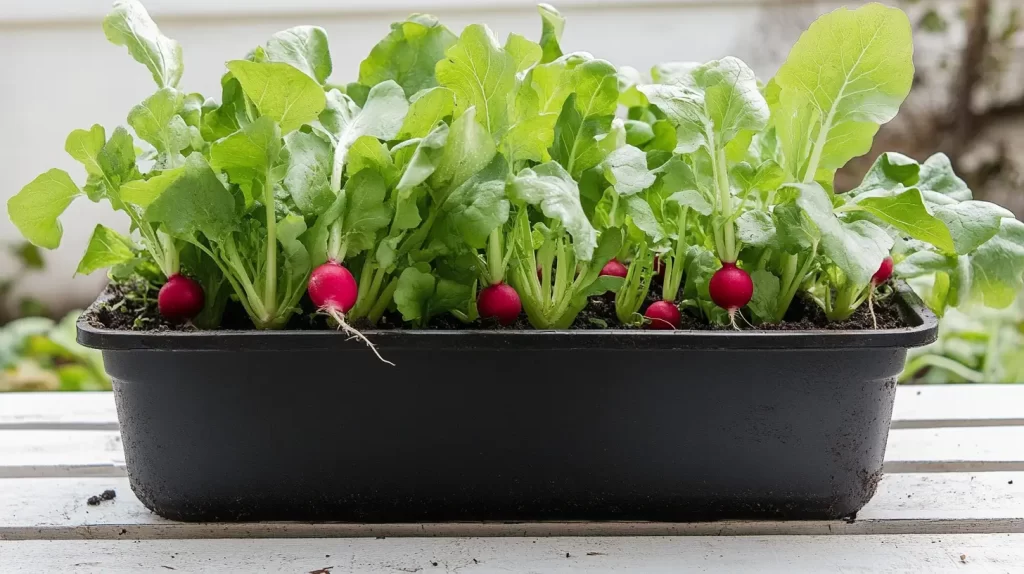
How to Grow the Easiest Container Garden Plants for Beginners
Growing your own food doesn’t have to be hard or expensive. Some plants are just naturally great for containers, and they don’t ask for much. Below, I’ve broken down how to grow each of the easiest container garden plants I mentioned earlier. These are perfect for beginners, budgeters, or anyone short on space.
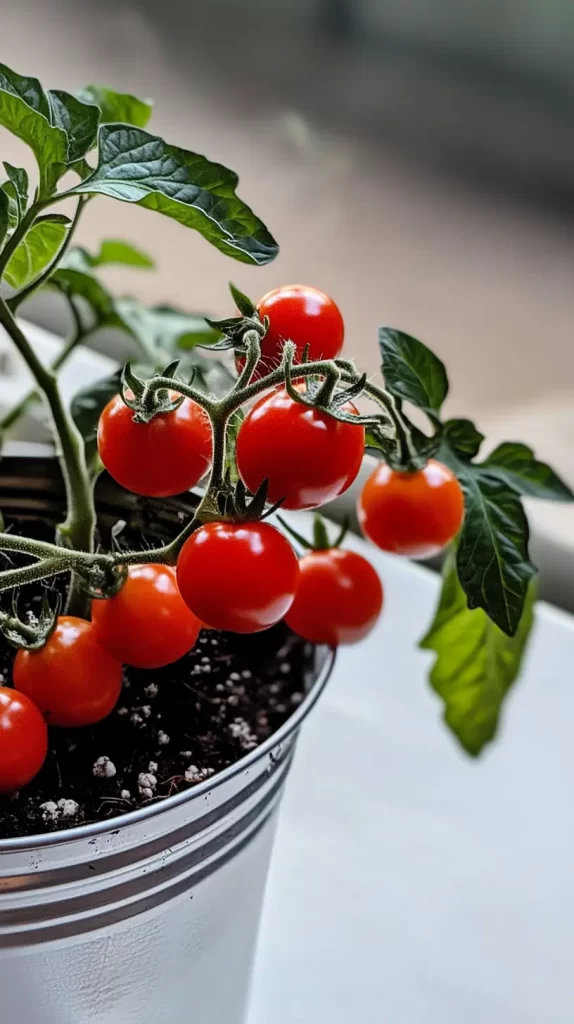
Cherry Tomatoes
Use a five-gallon bucket or deep pot with good drainage. Fill it with light potting mix and place it in full sun. Stick to one plant per container. Use a small cage or stake to help the vine grow upward. Water daily during hot weather. Feed with diluted compost tea or tomato fertilizer every 2 weeks. Pick tomatoes when fully red and firm. They’ll keep coming all season.
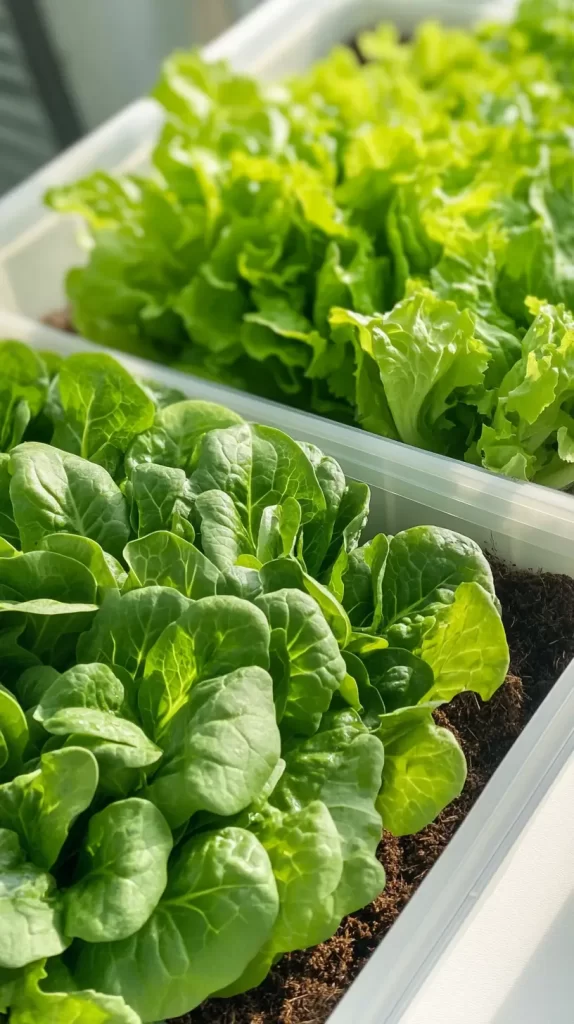
Lettuce and Spinach
Pick a wide, shallow container. These don’t need much root space. Use loose, well-drained soil. Place in a sunny or partly shaded spot. Sow seeds close together. Water often but don’t soak. Harvest outer leaves and let the center keep growing. You’ll get multiple harvests. Spinach prefers cooler temps, while lettuce is more flexible.

Herbs: Basil, Parsley, Mint, and Chives
Choose small pots for each herb or group two per larger pot. Basil and parsley love sun. Mint prefers partial shade and spreads fast, so give it its own pot. Chives need sun but don’t mind some shade. Snip herbs regularly to keep them full and flavorful. Don’t overwater—most herbs like their soil just barely moist.
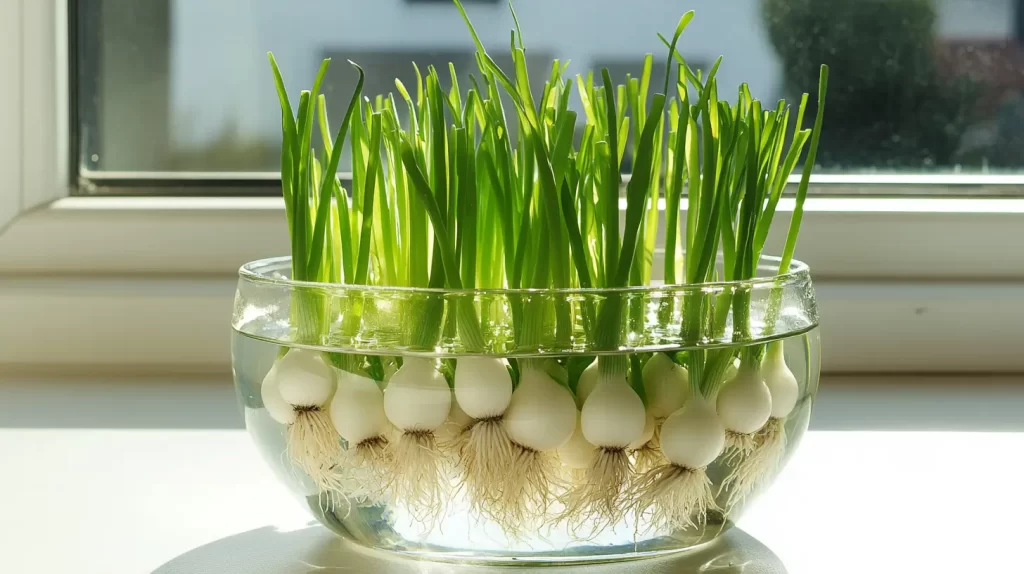
Green Onions
Save the white ends with roots from store-bought green onions. Stick them root-side down into a small pot of soil or a jar with just enough water to cover the roots. Keep near a sunny window. In about a week, you’ll see new green tops. Keep harvesting and replant as needed. They regrow fast.

Peppers
Use a medium-deep container with rich, well-draining soil. Place it where it will get 6+ hours of sun. Water when the top inch of soil feels dry. Peppers like warmth, so don’t plant them too early in the season. Add compost or natural fertilizer once a month. Pick when peppers reach full size and color.
Strawberries
Strawberries love hanging containers or wide shallow tubs. Use a well-draining potting mix and a container with holes. Choose everbearing or day-neutral varieties for a longer harvest. Place in full sun. Keep the soil moist but not wet. Snip off runners if you want bigger berries. Pick berries when fully red for the sweetest taste.
Radishes
Choose a wide pot at least 6 inches deep. Sow seeds directly into the soil about an inch apart. Keep the soil loose and moist. Radishes grow fast—most are ready in 3 to 4 weeks. Pull them when they’re about the size of a large marble. Don’t wait too long or they’ll get woody. Plant more every week or two for a steady supply.
These plants don’t need much to thrive. With just a few containers, a sunny spot, and a little care, you’ll have fresh food right at your fingertips—and save money doing it.
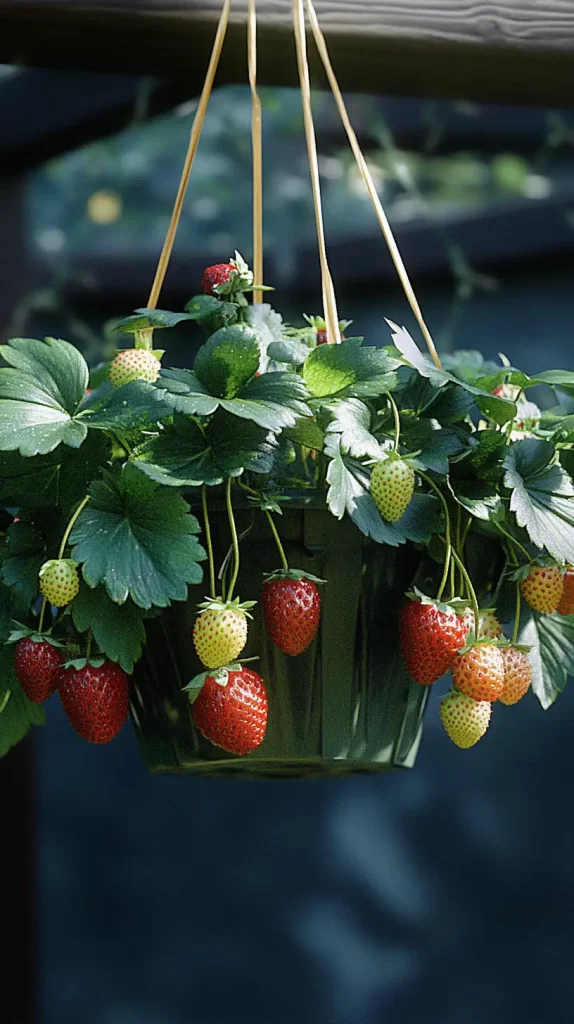
How to Make Cheap Potting Mix for Your Containers
Soil can be one of the most expensive parts of container gardening. But here’s the thing—you don’t need the fancy bags from the garden center to get started. You can mix up your own potting soil with things you might already have.
Start with:
- One part regular garden soil (free from your yard or a neighbor)
- One part compost (kitchen scraps turned to dirt or store-bought if needed)
- One part something that helps with drainage, like sand or perlite
Here are a few cheap or free ways to improve your mix:
- Add crushed eggshells for calcium.
- Mix in used coffee grounds (worms love them).
- Tear up newspaper or cardboard to lighten heavy dirt.
- Use coconut coir or shredded bark if you have it.
If your soil feels heavy or holds too much water, add more drainage. If it dries out too fast, add more compost or some shredded leaves.
Starting seeds? You’ll want a lighter mix. Try sifting your homemade soil through a mesh colander to make it fine and fluffy.
Want to save even more? Make your own compost:
- Collect veggie scraps, coffee grounds, eggshells, and yard waste.
- Keep it in a bin or even an old bucket with holes.
- Stir it every few days.
- In a few weeks, you’ll have nutrient-rich dirt for free.
Container gardening works best when your soil drains well but still holds moisture. Once you have a good mix, you won’t need to buy new soil every season.

Watering Tricks That Save Money and Time
Watering sounds simple, but when it comes to container gardening, it takes a little strategy—especially if you’re trying to save money. Too much water wastes resources. Too little and your plants struggle. Here’s how to get it right.
First, always check the soil with your finger. If the top inch is dry, it’s time to water.
Here are some easy watering tips that won’t cost a thing:
- Water early in the morning to avoid evaporation.
- Use a watering can made from a milk jug.
- Catch rainwater in buckets or bins.
- Place a saucer under pots to keep water from draining away too fast.
- Group containers together so they shade each other and stay moist longer.
Mulch is a big help too. You can use:
- Shredded newspaper
- Dried grass clippings
- Pine needles
- Leaves
- Cardboard strips
Mulch holds in moisture and keeps the roots cool. That means you water less often, which saves you time and money.
If you’re gone during the day, use this trick: fill a water bottle, poke a few holes in the cap, and stick it upside down in the soil. It’ll slowly drip water while you’re gone.
With the right setup, container gardening doesn’t have to be a daily chore. A little planning up front means less waste and fewer headaches later.
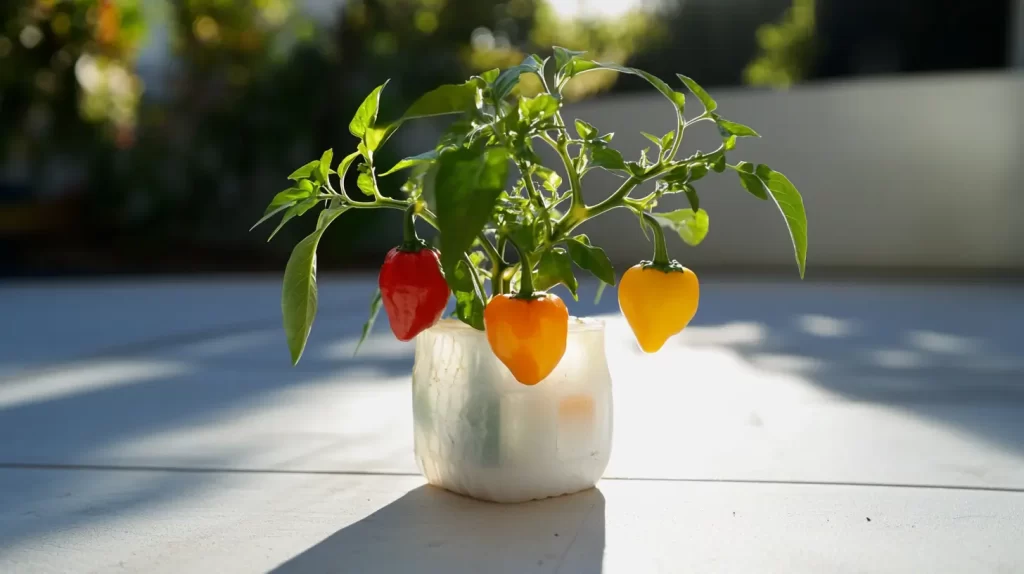
Use What You Have: Creative Containers for Gardening
You don’t need to buy new pots. Most of what you need is already in your home. Container gardening is great because it’s flexible. You can turn just about anything into a planter.
Here are some household items that make great plant containers:
- Coffee cans
- Ice cream tubs
- Yogurt containers
- Old boots or shoes
- Broken kitchen bowls
- Dishpans
- Laundry baskets
- Plastic drawers
Just make sure to poke drainage holes. A screwdriver or drill works fine.
Want to grow deeper roots? Try:
- Buckets (great for tomatoes)
- Milk crates lined with fabric
- Storage bins with holes in the bottom
Shallow-rooted plants like lettuce and herbs can grow in flatter containers like baking pans or pie tins.
Here’s a quick list of what to avoid:
- Anything that held chemicals
- Containers that rust easily
- Stuff that doesn’t let water drain
If it fits soil and can hold moisture, it can probably be used for container gardening. Use your imagination and think of it as a fun challenge.
Decorate if you want, or leave them plain. The plants won’t mind. And using what you already have is the best way to keep things frugal.
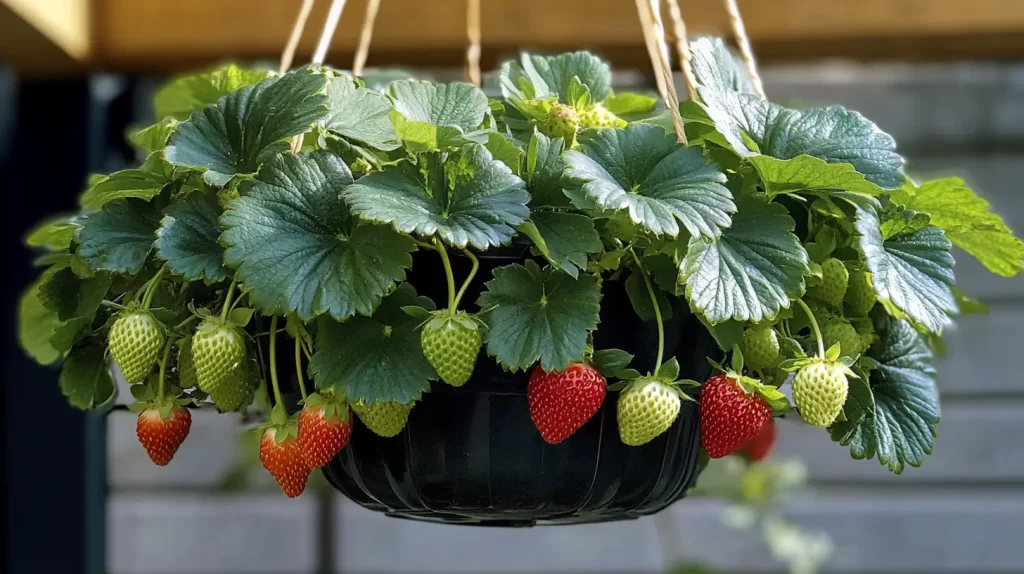
How Container Gardening Helps You Spend Less on Groceries
Let’s talk about the real money saver here. When you grow food at home, you buy less from the store. It’s that simple. And with prices going up, every bit helps.
Here’s how container gardening cuts costs:
- No more buying herbs every week
- Fewer grocery runs for salad greens
- Less food waste, because you pick what you need
- No packaging to throw away
- Your produce stays fresher because it’s picked the same day
Think about this: a small pot of basil at the store might cost $4. That same $4 can buy a packet of seeds that lasts for years. That’s a huge difference.
You can also regrow some foods right from scraps:
- Green onions (stick the white end in water)
- Lettuce (place the core in a dish of water)
- Celery (same as lettuce)
- Garlic (plant a clove)
Once you get the hang of it, container gardening can grow into something bigger. But even a small setup can cut your grocery bill.
Grow what you actually eat. Don’t plant kale if no one touches it. Choose things you use every day. And if you have extras, freeze or dry them for later.
When food comes from your porch or patio, you know it’s fresh. You know it’s clean. And you know it didn’t cost a fortune.
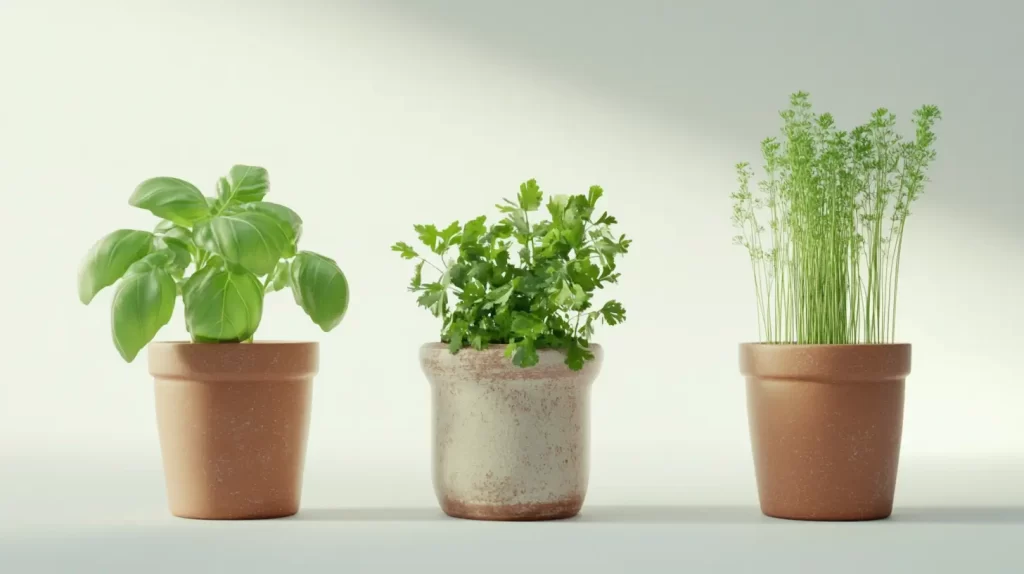
Final Thoughts: Why Container Gardening Just Makes Sense
Container gardening is easy to start, even with a tight budget. It’s low-cost, low-risk, and low-stress. You don’t need a yard or a green thumb. You just need a container, some dirt, and a sunny spot.
Here’s a quick recap of what we covered:
- Start with what you have—no need to buy fancy pots.
- Grow budget-friendly plants like herbs, lettuce, and tomatoes.
- Make cheap potting mix at home using compost and yard dirt.
- Use water wisely with tips like early morning watering and homemade drip bottles.
- Save on groceries by growing fresh food right outside your door.
A few plants can go a long way. Even just a pot of basil or a tub of lettuce saves you money every week.
If you’re already trying to live more frugally, container gardening is one of the easiest places to begin. It fits right into a simple, budget-friendly lifestyle.
And once you get going, it’s kind of fun. It’s rewarding. And it’s something you can tweak, expand, or scale back depending on the season or your schedule.
I also love that it’s Pinterest-friendly. There are endless ideas and hacks online to keep things fresh. Just look up “container gardening” and you’ll find creative inspiration for days.
The best part? You get to eat what you grow. It doesn’t get more practical—or more satisfying—than that.
